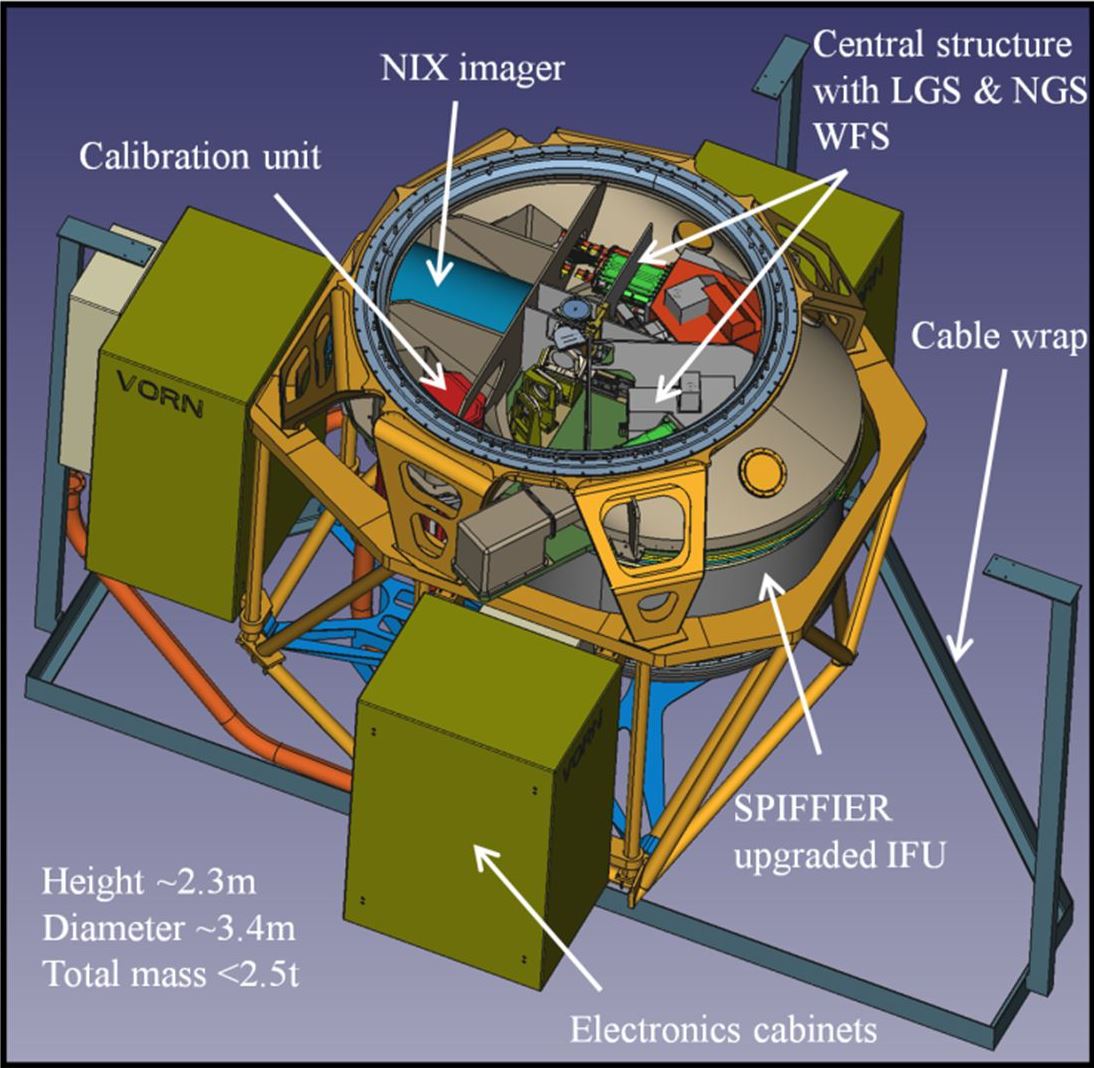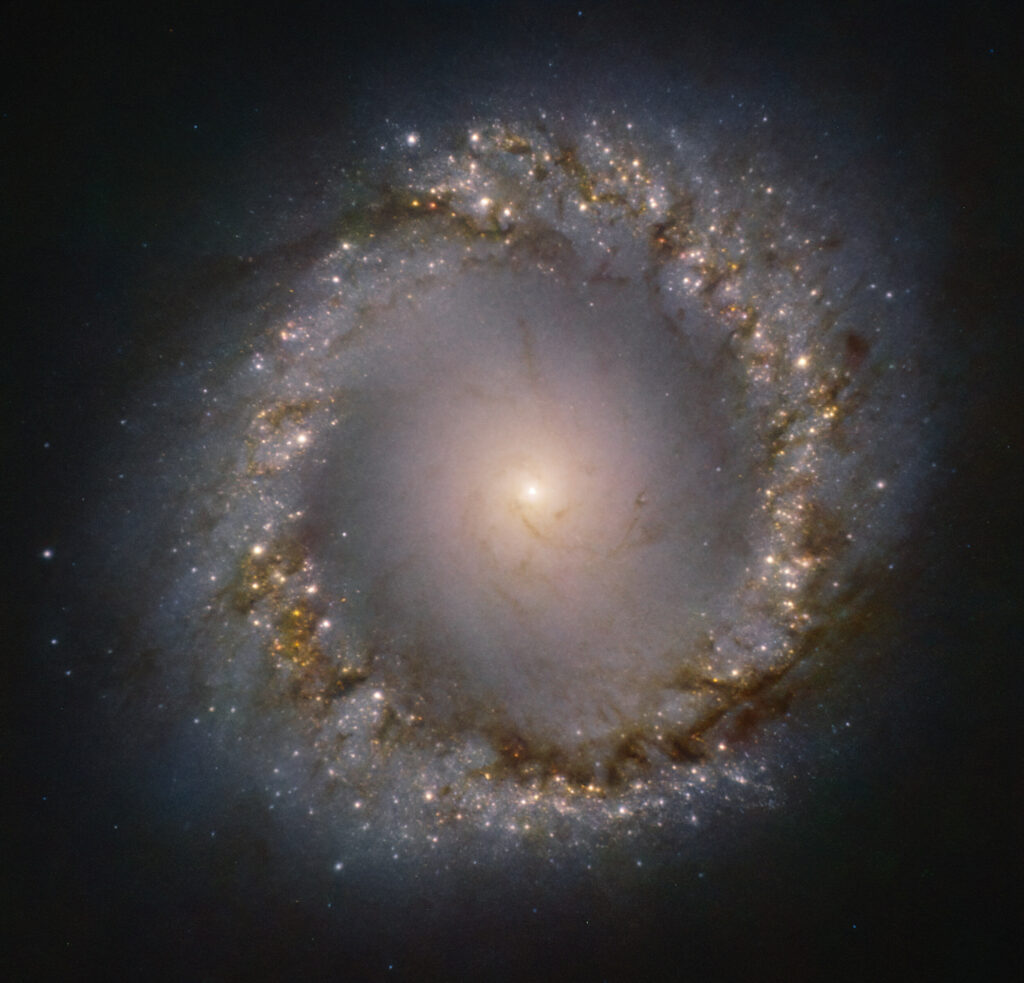ESO’s Very Large Telescope (VLT) has been replenished with a new ERIS scientific instrument (Enhanced Resolution Images and Spectrograph). The camera successfully completed the first test observations by photographing the central region of the galaxy NGC 1097.
ERIS Technical Mechanism
ERIS is a universal infrared receiver. It includes a near-infrared camera NIX. It provides for the use of coronagraphy, a technique of blocking starlight, which allows to observe exoplanets orbiting the star.

ERIS is also equipped with a SPIFFIER 3D spectrograph. It will allow studying the dynamics of distant galaxies or measuring the speeds of stars orbiting a supermassive black hole in the center of the Milky Way.
According to experts, the technical capabilities of ERIS will allow it to obtain the clearest images that are currently possible with a single 8.2-meter telescope. This is achieved through the use of adaptive optics technology. ERIS is equipped with sensors for the analysis of atmospheric turbulence in real time by the radiation of an astronomical light source or a laser artificial star. This information is sent to the secondary deformable VLT mirror, which corrects distortions and creates clearer images.
The center of the galaxy in the constellation Fornax
The first trial observations with ERIS were performed in February. In August and November, the tool passed new tests, the purpose of which was to clarify the limits of its capabilities. In particular, it observed the central region of the galaxy NGC 1097, located at a distance of 45 million light-years from Earth in the direction of the constellation Fornax.

The ERIS image shows gas-dust rings located in the very center of the galaxy. In it, the star formation regions stand out in bright spots. In the very center shines the actively radiating “heart” of the galaxy, in which a supermassive black hole actively absorbing matter is hidden. To get an idea of the resolution of ERIS, it must be said that the resulting image occupies an area of less than 0.03% of the lunar disk in the sky.
ERIS will be active for at least ten years. It is expected that it will make a significant contribution to many fields of astronomy — from the study of distant galaxies and black holes to the study of exoplanets and dwarf planets of the Solar System.
According to https://www.eso.org
Follow us on Twitter to get the most interesting space news in time
https://twitter.com/ust_magazine

